Set Your Watch with B'nai Elim Jerusalem Time
Jerusalem On Line - Channel 2 News from Israel
UN Doomsday Treaty With Ginny Simone
30 November 2007
The Western Wall During the British Mandate
What was the controversy over the Western Wall during the Mandate Period?
The Jewish connection to the Temple Mount and Western Wall dates back more than 3,000 years and is rooted in tradition and history. When Abraham bound his son Isaac upon an altar as a sacrifice to God, he did so atop Mount Moriah, today’s Temple Mount. The First Temple was constructed during King Solomon's reign, which started in 967 BC. The Temple's Holy of Holies contained the original Ark of the Covenant, until the Temple was destroyed by the Babylonians in 586 BC. The Second Temple was built on the same site seventy years later, and then greatly expanded during the first century BC by King Herod. Both the First and Second Temples were the centers of Jewish religious and social life until the Second Temple’s destruction by the Romans in 70 AD.
The massive stone rampart of the Western Wall (or Wailing Wall, or Kotel in Hebrew) is in the midst of the Old City in Jerusalem. It is the section of the western supporting wall of the Temple Mount which has remained intact since the destruction of the Second Jerusalem Temple in 70 AD, the last vestige of the Temples on the site chosen by Solomon. The street in front of the Wall and the Wall itself became the most sacred spot in Jewish religious and national consciousness and tradition by virtue of its identification with the Western Wall of the Holy of Holies in the Temple, from which, according to numerous sources, the Divine Presence never departed.
The import of the area to Islam is based on events after the death of Mohammed The Prophet in 632 AD. Since he died six years before Jerusalem surrendered to the Muslims, Mohammed could never have set foot in Jerusalem. The Arabic name of Jerusalem Al-Quds (The Holy One) is derived from 'Beit-el-Muqadas' (i.e. 'Beit H’amikdash'), the Hebrew name for the Temple mount. The sanctity of Jerusalem was not enshrined in Islam at its inception and the city is not mentioned once in the Koran, but was introduced into it only after the death of Mohammed, perhaps to lure pilgrims from Mecca and Medina on the Saudi Arabian Peninsula.
During the 19th century there were a number of Zionist attempts to to get control of the Wall and surrounding districts, but none succeeded. The Arab owners of the property correctly sensed its importance to the Jews and were not willing to sell, even at very favorable terms offered by Baron Rothschild. On the contrary, the Arab religious authorities, supported by the Turks and later the British, made changes in the streets, buildings and Arab practices specifically to prevent Jewish observance and to disrupt any Jewish presence at the Wall.
After the Balfour Declaration gave the Jews hope for a homeland in Palestine, the Land of Israel, the Western Wall gained national significance among the Jews together with the traditional religious significance. In order to frustrate these Jewish aspirations, the Arab Mufti of Jerusalem started to incite his community against the Zionists who, he claimed, intended to seize control of the Wall. In order to antagonize the Jews, the Mufti ordered the opening of a gate at the southern end of the street the follows the base of the Wall, thus converting it into a thoroughfare for people and animals. In addition the Muslims deliberately held loud-voiced ceremonies in the vicinity. They also complained to the British about the placing of accessories of worship near the Wall, and a partition between men and women was removed by the British police on Yom Kippur of 1928.
In August 1929 an instigated Muslim crowd rioted among the worshipers and destroyed ritual objects. This unrest was followed by widespread riots a few days later stemming from Arab opposition to Jewish prayer at the Western Wall. muslim propaganda claimed that Jewish prayer endangered the mosques holy to Islam. The riots of 1929 began in Jerusalem and spread to many other areas of Palestine. Particularly infamous is the massacre of the Jews of Hebron, accounting for over one third of the victims in this wave of riots.
The British set up a committee of inquiry (the Shaw Commission) to determine the causes of the riots and subsequently an international committee (the "International Commission for the Wailing Wall" consisting of a Swede, a Swiss, and a Dutchman) was appointed by the League of Nations to resolve "the problem of the Wall". It conducted in Jerusalem, in the summer of 1930, "the trial of the Wall". During the meetings 52 witnesses were examined, 21 of them being called by the Jewish Counsel, 30 by the muslim Counsel, and one, a British official, by the Commission.
The Jewish witnesses recited the ancient history of the Temple and the continuous record, well documented, of Jewish devotions at the Western Wall. They did not make any property claim about the Wall, taking the position that the Wall did not belong to any person or nation, but only to God. The asked only that there would be enforcement of the written intent of the Mandate: "according to Article 15 of the Mandate, the Mandatory Power shall guarantee the Jews free exercise of worship at the Wall in the form prescribed by the ritual of their religion without any interference whatever from the Arabs or the adherents of any other religion."
The Arab respresentatives made it difficult for the Commission because they refused to recognize the authority of the British Mandate. They stated, and it is quoted in the Commission's report, "The Palestine Arab nation have rejected continually and in every opportunity the British Mandate over Palestine, and therefore they cannot be bound by any arrangement or regulation derived from that." The Arabs further asserted that, it is the "Balfour Declaration that has incited the Jews to claim certain rights which in reality do not exist" and to generally insist on continued Arab control of all sites in Jerusalem that the Arabs considered sacred.
In Deceomber 1930 the Commission concluded that the Muslims had absolute ownership of the Wall and adjacent property. However, the Jews were to be given free access to the Western Wall for the purpose of devotions at all times subject to explicit stipulations that allowed Jews to come to the Kotel only in small groups and forbade them to pray there on Muslim festivals and on Fridays. In addition, Jews were also forbidden to bring Sifrei Torah to the Kotel, to place any chairs in front of the Wall or to blow the Shofar, lest it offend the Arab population.
The Jewish authorities agreed to this unfair verdict, except for the prohibition of the Shofar, considering it a humiliation. The Arabs rejected the report. The Betar Youth Movement organized Plugut Hakotel, a special unit of young men who would "illegally" blow the Shofar at the Wall on Yom Kippur to stir and arouse the Jewish people and fulfil the commandment of blowing the Shofar. Their activities would always lead to the intervention of the British police.
The Jewish connection to the Temple Mount and Western Wall dates back more than 3,000 years and is rooted in tradition and history. When Abraham bound his son Isaac upon an altar as a sacrifice to God, he did so atop Mount Moriah, today’s Temple Mount. The First Temple was constructed during King Solomon's reign, which started in 967 BC. The Temple's Holy of Holies contained the original Ark of the Covenant, until the Temple was destroyed by the Babylonians in 586 BC. The Second Temple was built on the same site seventy years later, and then greatly expanded during the first century BC by King Herod. Both the First and Second Temples were the centers of Jewish religious and social life until the Second Temple’s destruction by the Romans in 70 AD.
The massive stone rampart of the Western Wall (or Wailing Wall, or Kotel in Hebrew) is in the midst of the Old City in Jerusalem. It is the section of the western supporting wall of the Temple Mount which has remained intact since the destruction of the Second Jerusalem Temple in 70 AD, the last vestige of the Temples on the site chosen by Solomon. The street in front of the Wall and the Wall itself became the most sacred spot in Jewish religious and national consciousness and tradition by virtue of its identification with the Western Wall of the Holy of Holies in the Temple, from which, according to numerous sources, the Divine Presence never departed.
The import of the area to Islam is based on events after the death of Mohammed The Prophet in 632 AD. Since he died six years before Jerusalem surrendered to the Muslims, Mohammed could never have set foot in Jerusalem. The Arabic name of Jerusalem Al-Quds (The Holy One) is derived from 'Beit-el-Muqadas' (i.e. 'Beit H’amikdash'), the Hebrew name for the Temple mount. The sanctity of Jerusalem was not enshrined in Islam at its inception and the city is not mentioned once in the Koran, but was introduced into it only after the death of Mohammed, perhaps to lure pilgrims from Mecca and Medina on the Saudi Arabian Peninsula.
During the 19th century there were a number of Zionist attempts to to get control of the Wall and surrounding districts, but none succeeded. The Arab owners of the property correctly sensed its importance to the Jews and were not willing to sell, even at very favorable terms offered by Baron Rothschild. On the contrary, the Arab religious authorities, supported by the Turks and later the British, made changes in the streets, buildings and Arab practices specifically to prevent Jewish observance and to disrupt any Jewish presence at the Wall.
After the Balfour Declaration gave the Jews hope for a homeland in Palestine, the Land of Israel, the Western Wall gained national significance among the Jews together with the traditional religious significance. In order to frustrate these Jewish aspirations, the Arab Mufti of Jerusalem started to incite his community against the Zionists who, he claimed, intended to seize control of the Wall. In order to antagonize the Jews, the Mufti ordered the opening of a gate at the southern end of the street the follows the base of the Wall, thus converting it into a thoroughfare for people and animals. In addition the Muslims deliberately held loud-voiced ceremonies in the vicinity. They also complained to the British about the placing of accessories of worship near the Wall, and a partition between men and women was removed by the British police on Yom Kippur of 1928.
In August 1929 an instigated Muslim crowd rioted among the worshipers and destroyed ritual objects. This unrest was followed by widespread riots a few days later stemming from Arab opposition to Jewish prayer at the Western Wall. muslim propaganda claimed that Jewish prayer endangered the mosques holy to Islam. The riots of 1929 began in Jerusalem and spread to many other areas of Palestine. Particularly infamous is the massacre of the Jews of Hebron, accounting for over one third of the victims in this wave of riots.
The British set up a committee of inquiry (the Shaw Commission) to determine the causes of the riots and subsequently an international committee (the "International Commission for the Wailing Wall" consisting of a Swede, a Swiss, and a Dutchman) was appointed by the League of Nations to resolve "the problem of the Wall". It conducted in Jerusalem, in the summer of 1930, "the trial of the Wall". During the meetings 52 witnesses were examined, 21 of them being called by the Jewish Counsel, 30 by the muslim Counsel, and one, a British official, by the Commission.
The Jewish witnesses recited the ancient history of the Temple and the continuous record, well documented, of Jewish devotions at the Western Wall. They did not make any property claim about the Wall, taking the position that the Wall did not belong to any person or nation, but only to God. The asked only that there would be enforcement of the written intent of the Mandate: "according to Article 15 of the Mandate, the Mandatory Power shall guarantee the Jews free exercise of worship at the Wall in the form prescribed by the ritual of their religion without any interference whatever from the Arabs or the adherents of any other religion."
The Arab respresentatives made it difficult for the Commission because they refused to recognize the authority of the British Mandate. They stated, and it is quoted in the Commission's report, "The Palestine Arab nation have rejected continually and in every opportunity the British Mandate over Palestine, and therefore they cannot be bound by any arrangement or regulation derived from that." The Arabs further asserted that, it is the "Balfour Declaration that has incited the Jews to claim certain rights which in reality do not exist" and to generally insist on continued Arab control of all sites in Jerusalem that the Arabs considered sacred.
In Deceomber 1930 the Commission concluded that the Muslims had absolute ownership of the Wall and adjacent property. However, the Jews were to be given free access to the Western Wall for the purpose of devotions at all times subject to explicit stipulations that allowed Jews to come to the Kotel only in small groups and forbade them to pray there on Muslim festivals and on Fridays. In addition, Jews were also forbidden to bring Sifrei Torah to the Kotel, to place any chairs in front of the Wall or to blow the Shofar, lest it offend the Arab population.
The Jewish authorities agreed to this unfair verdict, except for the prohibition of the Shofar, considering it a humiliation. The Arabs rejected the report. The Betar Youth Movement organized Plugut Hakotel, a special unit of young men who would "illegally" blow the Shofar at the Wall on Yom Kippur to stir and arouse the Jewish people and fulfil the commandment of blowing the Shofar. Their activities would always lead to the intervention of the British police.
Subscribe to:
Post Comments (Atom)
Colonel Richard Kemp, British Army - Comment on the IDF's Actions in Gaza
Radical Islams Plans for Western Civilization
THE THIRD JIHAD - WATCH THIS IMPORTANT FILM NOW - FREE
Obama's true agenda...Throw Israel Under the Bus
****Regarding Obama’s Speech before the U.N. Obama has surpassed the peanut farmer Jimmy Carter as the worst and most anti-Israel, anti-Semitic, Arabist President who has ever occupied the White House. Not only is he is a narcissistic moron who is dragging America into an abyss; Obama is the most dangerous threat to World Freedom, Liberty and Western Civilization since Hitler. (Blogmaster)
Senator Joe Leiberman 'Islamist Extremist Regime'
JOHN VOIGHT ON OBAMA'S DISTAIN FOR ISRAEL
CHAZAK CHAZAK
ON THE PATH TO MUSLIM DOMINATION - REVERSABLE? STOPPABLE?
2 STATE SOLUTION - COMMENTARY BY THE "18"
A message to the Jewish people and the entire world
Chronicles I - 16:15-18: "Forever remember His covenant that he commanded forever; That He made with Abraham and swore to Isaac; and confirmed in a decree for Jacob, for Israel, as an eternal covenant; saying to You I will give the Land of Cannan as your alloted heritage"
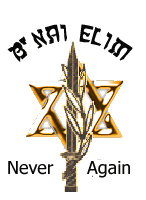














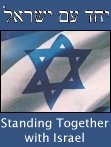

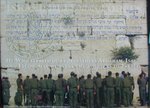

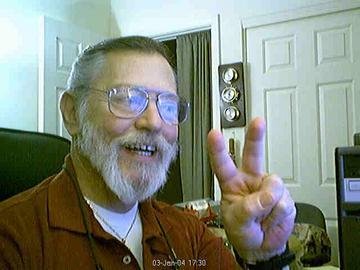






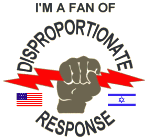
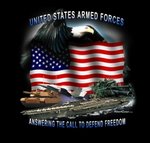


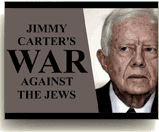

 While doing IDF (Israel Defence Forces) reserve duty on a mountain overlooking the
While doing IDF (Israel Defence Forces) reserve duty on a mountain overlooking the 

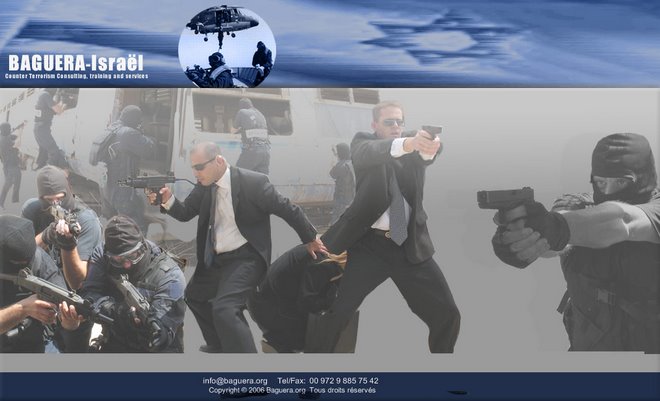



No comments:
Post a Comment